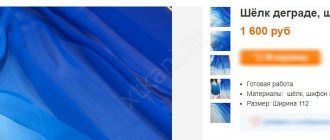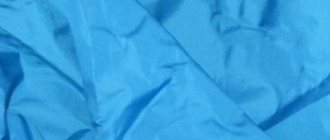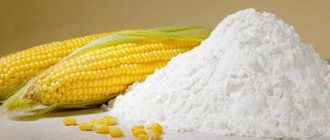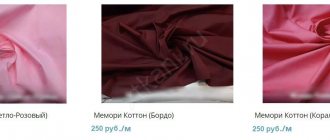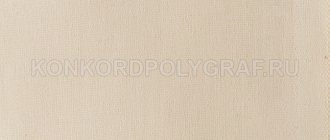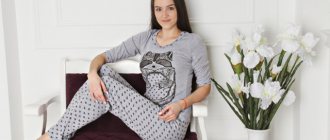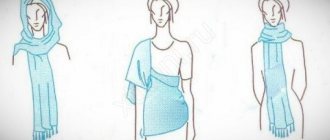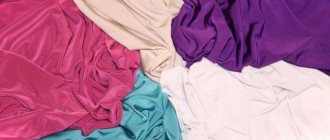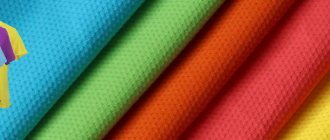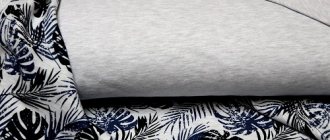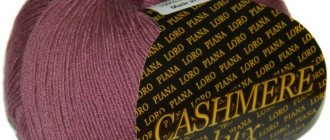Plush is a soft, warm fabric covered with a pile of silk, wool or cotton fibers. The material is widely used in sewing women's clothing, making curtains and stage costumes, and upholstering furniture. It is from this material that a teddy bear and other soft toys are made. Pleasant to the touch plush fabric gives a feeling of comfort and carefreeness, involuntarily bringing you back to childhood.
What type of fabric is this
The process of making plush is almost the same as that of velvet. The difference is the length of the pile. In the first case, it is longer than in the second. Modern material is the result of machine production.
Plush colors
One of the most common is loop plush: two threads are thrown onto the needles, the loops are made short on the front side, and longer on the back side.
There are several ways to create it:
- A single-font machine makes fabric from cotton threads, and sometimes from viscose (fleece plush). The final loops here are short, no more than 4 mm.
- The Rachel machine produces patterned and looped plush.
- The double-font round and Rachel machine produce material with long fibers (15-16 mm).
Velvet
Luxurious velvet fabric: a detailed review
more details
Comparative characteristics
Plis and plush are types of velvet. They have similar manufacturing processes, and their appearance is not much different.
Plush material is also called long pile velvet . They have similar manufacturing processes and properties. However, the length of the pile of plush can reach 16 mm, and the length of velvet is usually no more than 3 mm. The latter has an even thicker “undercoat”. The base of the plush is dense, sometimes even rough. Velvet has a more flowy soft base.
Plis is translated from English and French as “plush”. It is sometimes called cheap or paper velvet. Unlike real plush, which is made from silk fibers, plush is a cheaper option. This is a rather hard and rough fabric with a pile of up to 6 mm. It is based on cotton, less often wool. Unlike its brother, corduroy does not have such an expensive and noble appearance.
Some sources claim that plush and terry are interchangeable concepts, but this is not entirely true. The latter is a knitwear made of cotton or linen, which is covered with looped pile. The appearance of terry is somewhat similar to uncut plush, but it has great absorbent qualities.
Because of this, the material is widely used for the production of bathrobes, towels, and toys. Such fabrics are light and loose. In plush, the loops are under tension, while in terry, they are created due to the free flow of a slightly stretched warp.
Thus, although these fabrics have a similar appearance, they have different characteristics and uses.
Origin story
This type of fabric has been known for many years. In China, soft, piled material has been made since the 3rd century BC. Craftsmen of that time used silk threads to create plush. In the 7th-7th centuries, mention of it appeared in the Middle East.
And in Europe they learned to make plush around the 12th century. At that time, Europeans highly appreciated the rich appearance of things made from soft plush. This expensive fabric was brought to Russia from Europe until the Velvet Court was opened in Moscow in 1623.
Rules of care
Products require careful care. They are very capricious and any wrong action can permanently ruin the appearance of the product. In order for this fabric to retain its original characteristics for a long time, the following rules must be followed:
- For plush products, dry cleaning is recommended;
- If you decide to wash the item yourself, under no circumstances should you unscrew it;
- For ironing, the “Vertical steam” function is recommended;
- Regular ironing can ruin the appearance;
- Do not use rough brushes or strong detergents to remove dirt.
Plush is a fabric that always looks rich in the interior. She looks expensive and presentable. With such textiles, the room takes on a cozy, rich style with a hint of vintage. However, do not forget that this material is very capricious and requires careful handling.
© 2021 textiletrend.ru
Types of fabric
Depending on the fiber, plush can be:
- Unilateral.
- Double-sided has hairs on both the front and back sides.
- The cut one looks like velvet, with thick fibers.
- Looped resembles terry.
By finishing, fabric can be divided into:
- Patterned (due to the different lengths of the fibers, an unusual texture is obtained).
- Smooth (pile over the entire surface of the same length).
- Embossed (the fibers lie in different directions).
- Shaped (the fur is pressed or cut in places).
Advantages and disadvantages
Plush, like any fabric, has advantages and disadvantages. Let's talk about them.
Advantages:
- Aesthetic appearance;
- Strength;
- Good thermal insulation;
- Versatility of use;
- They do not lose their shape and color for a long time.
Flaws:
- High price (if made from natural silk);
- Quickly absorb dust;
- Difficult to remove stains;
- If not properly cared for, they can wear out quickly.
The characteristics of the product depend on the materials that underlie the product. Silk pile does not absorb dust, unlike synthetic or wool fibers. But it requires more careful care.
Compound
Initially, plush fabrics were made mainly from cotton raw materials, but today the compositions can be varied. For example, cotton is often combined with viscose, silk, and synthetics (polyester). Sometimes wool and other types of textile raw materials may be used.
Much more interesting is the method of producing artificial fur. There are several known technologies thanks to which the pile is obtained:
- looped, or continuous - elongated loops are formed on the surface;
- split, reminiscent of familiar fur hairs;
- one-sided, or facial;
- double-sided, located both outside and inside.
Plush fabrics with cut pile look very similar to velvet. As a rule, cotton raw materials are used as the basis, and viscose or wool fibers are used for the weft.
Looped models resemble familiar terry towels. They are created on special knitting machines, so it is more logical to talk about knitted fabrics than about classic fabrics.
Section of pile weave fabric: a) – weft weave; b) – warp weave, two-sheet method; c) – warp weave, rod method
Single-sided materials are more popular than double-sided ones, but today you can buy both.
Application
You have seen several photos of plush material - it’s time to understand what products are made from this beautiful, pleasant and soft-to-touch fabric! The areas of application are very wide - from home accessories to clothing for adults and children.
Let's look at this issue in more detail! Manufacturers actively use the material for manufacturing and sewing:
- Curtains and drapes for state rooms (restaurants, museums, theaters and similar establishments);
- For upholstery and covers for upholstered furniture - armchairs, sofas, headboards;
- Decorative blankets, bedspreads, pillows, rugs - also for rugs;
- Hats and scarves;
- Outerwear - coats, short fur coats and fur coats, jackets;
- Children's soft toys - the range is huge;
- Children's accessories - backpacks, bags;
- For home clothes - bathrobes, pajamas, slippers,
- Regular adult and children's clothing - sweaters, skirts and pants, vests and much more.
Some of our readers remember how popular plush fabric was in the USSR - it is obvious that the material is still not losing ground! There are a lot of manufacturers in the world - among them Italy, America and China.
Now you know the name of soft plush fabric, you have understood the main characteristics, disadvantages and positive qualities. For general development, it is useful to know what properties your favorite products have and how to properly care for them! Next, see the description of the singing quality cooler canvas at the link.
Description of material
The plush surface can be solid or patterned.
Plush fabric is made using a pile weave method, which is formed by three systems of threads. Two root systems, warp and weft, due to plain or twill weaving, have high strength and well retain the pile formed by the third, pile thread. Silk, wool and cotton fibers are used to make pile.
The pile on the surface of plush products can be long or short. Its height ranges from 3 to 16 mm. Fabrics with the longest pile are classified as faux fur.
The plush surface can be solid or patterned, in the form of narrow and wide stripes, small and large pile patterns. Despite the significant weight and thickness of the fabric, it drapes perfectly and does not form bald spots or creases.
What can you sew from minky plush?
Minky plush is one of the new and really popular fabrics, similar in appearance to classic plush. This name can be written as Minkee, and is modified from time to time. In fact, it has gained fame as a synthetic material. Minky contains a soft, smooth texture with short hairs. At the very beginning, the material was used to produce comfortable blankets or children's blankets, but later it began to be used in other products for teenagers and adults, and then for sewing decorative toys in the home. If you urgently need to create comfort, plush will push the unpleasant fur aside. And in fact, it is not inferior to other fabrics in retaining heat; even fleece will not help overcome this fabric. Moreover, Minky Plush is not afraid of physical influences and will not burn in the sun or deteriorate when washed.
Plush Minky
Features and characteristics of plush
Plush material has a number of features that must be taken into account when sewing. It has a pile that should initially be long. But at the same time, in one area or another, the villi may be shorter or absent altogether - but this depends on the design decision. Read about the composition and properties of the material madapolam here.
For ease of use, the villi are often smoothed to one side.
To maintain a beautiful appearance, special brushes are used when making the material. The density of the pile is somewhat less than, for example, that of velvet and corduroy, but it is not sparse.
Easily adapts to the needs of the seamstress - it is easy to drape and looks beautiful.
What does the fiber consist of and what does it look like?
The base of the plush can be made from two fabrics:
- wool;
- cotton
The first option is more like fur (faux fur), is highly durable, and retains heat well. Cotton fabric has a denser weft, it is also called ground, and it is also supplemented with threads of silk and wool. Find out what satin jacquard fabric looks like and what it is used for here.
Properties and quality, density
It is distinguished by its high density - the threads are woven as close as possible to create a strong base.
It is worth understanding that the option that uses silk fibers is more resistant to contamination, but is more expensive.
The distinctive properties of this kind of fabric are called:
- high strength - this is especially noticeable when trying to tear the material;
- interesting and attractive appearance;
- ability to keep warm;
- breadth of application of the material.
The disadvantages include such nuances as the heavy weight of the product, difficulties in sewing and care. Faster contamination of the material, because between the fibers become clogged with dust. Find out about the types of teak fabric at this link.
Cutting and sewing
Plush material, what it is and how to properly sew blankets, slippers or sweaters is really easy to figure out. The finishing can be shaped, smooth, patterned and embossed. What is better and how to distinguish it must be written in books on needlework. It’s not difficult to guess which finish is suitable for a Teddy bear or a warm jumper. However, it is necessary to know several significant features and different methods of finishing the fabric in advance, so that later you do not make stupid mistakes when making or consuming this material.
Product
Plush is, first of all, softness and lightness, synthetics in many options for any warm clothing.
The patterned version is made unique by weaving fibers of different lengths. And the shaped finishing method involves keeping the patterned in a more complex method, where there are more facets. The smooth method turned out to be the simplest, in which the fibers are always the same length on the canvas. And the embossed variation is characterized by the fact that the pile is laid in various directions.
You might be interested in What is technical felt: characteristics of a sheet building material
Production technology
The material is produced according to classic velvet manufacturing schemes. And essentially the difference between these materials is only in the length of the pile. To produce a loop texture, two threads are thrown onto the needle at once, and the stretch from the inside should be greater than from the face. Long threads are placed closer to the hook.
When making a smooth fabric, one thread is passed through a long loop, and the next through a short one.
To create a cut one, two contour machines with reed needles, as well as a tokol or hook are used. During operation of the machine, during one pass of the needle, two threads come out at once - one provides the density of the soil, and the second provides loops. At the end of the process, the loops are cut with a circular knife.
They are produced on special machines - this option cannot be done manually, and the choice of machine directly depends on what type of fabric needs to be obtained at the output.
Created based on materials such as:
- cotton;
- viscose silk;
- wool (merino, angora and goat);
- staple yarn.
More short loops are used to decorate the pattern.
